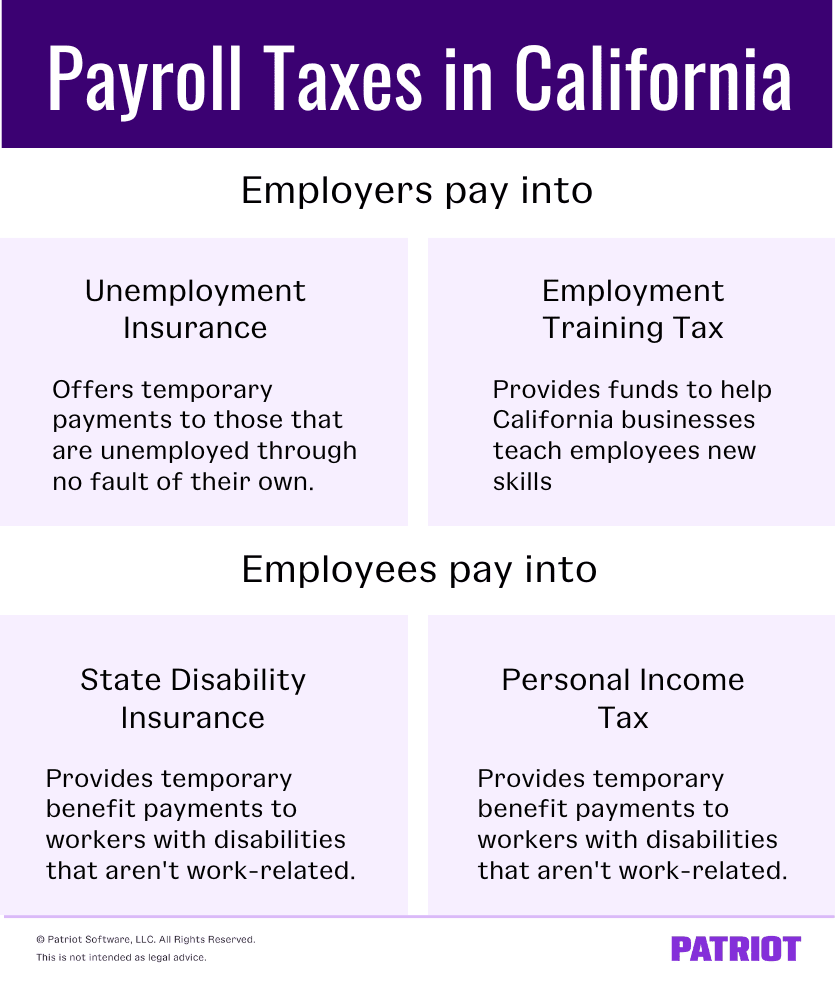There are a million things you have to manage when running your business. Whether or not you want to admit it, payroll taxes should be one of your top concerns. Payroll taxes generally include Social Security and Medicare. But, many states have additional taxes that employers need to deduct from employee wages. California payroll tax is a prime example.
If you’re an employer in California, you must understand California payroll tax rates. This article will define payroll taxes and the specific details of California payroll tax.
What are payroll taxes?
What are payroll taxes? Payroll taxes include Social Security and Medicare taxes. Employers and employees share these taxes. You’ll both pay a percentage of these taxes. For Social Security, the shared rate is 6.2%. For Medicare, the shared rate is 1.45%.
There are other taxes withheld from employee wages, but they are referred to as employment taxes. Employment taxes can include:
When processing payroll taxes, you must:
- Keep track of the proper payroll documents for all employees
- Calculate payroll taxes
- Withhold taxes from employee wages
- Remit taxes to the IRS, state, and other appropriate authorities
- File a payroll tax report
Pro tip: Depending on where your employees work, you may need to document the amounts deducted from employee gross pay and the resulting net pay on a pay stub. Understand your documentation requirements for compliance.
Payroll taxes in California
There are four California employer payroll taxes to keep track of. These taxes are in addition to Social Security and Medicare.
Employers contribute to:
- Unemployment Insurance (UI)
- Employment Training Tax (ETT)
Employees pay into:
- State Disability Insurance (SDI)
- Personal Income Tax (PIT)

Unemployment insurance (UI)
California’s state unemployment insurance is an employer-paid wage tax. UI offers temporary payments to those who are unemployed through no fault of their own.
You pay a percentage of the first $7,000 from employee wages earned during a calendar year. Both the UI rate schedule and the taxable amount of wages can change annually. The California System of Experience Rating decides your UI contribution rate. You can receive your updated UI rate online.
If you are a new employer, your pay is set at 3.4% for two to three years. The UI tax rate is capped at 6.2%. This means that the UI maximum tax, per employee, is only $434 per year.
Nonprofit and government employers can choose to use the reimbursable method of paying UI benefits. Employers using the reimbursable method reimburse the UI fund on a dollar-for-dollar basis for any benefits paid to their former employees.
Employment training tax (ETT)
The employment training tax provides funds to help California businesses invest in their workforce by teaching employees new skills.
If your business is subject to the ETT in 2022, you must pay 0.1% on the first $7,000 from employee wages during a calendar year.
State disability insurance (SDI)
State disability insurance is deducted from employee wages and provides temporary benefit payments to workers with disabilities that aren’t work-related. Workers’ compensation laws cover work-related disabilities. For 2022, you should withhold 1.1% as long as your employees make $145,600 or less for the year. The maximum to withhold is $1,601.60 for each employee.
Paid family leave is a part of SDI and extends benefits to people who can’t work because they need to:
- Care for a seriously ill family member
- Bond with a new child
- Make arrangements because of a family member’s military deployment. Qualifying events include (but are not limited to) attending military-sponsored events or addressing issues related to the military member’s deployment or death.
Personal income tax (PIT)
Personal income tax is deducted from income made in California by both residents and non-residents. The PIT program provides resources for California public services such as schools, public parks, roads, and human services.
The California PIT withholding rate is based on the employees’ Form W-4 or DE 4. There is no taxable wage limit.
Navigating California payroll tax as an employer
California offers an e-service for businesses to make your payroll taxes as easy as possible. If you’re just getting started, you can order all the necessary forms online. Once you register online, the state will send you the documents you need, including the California Employer’s Guide.
If you’re interested in more information concerning your federal tax responsibilities as an employer, check out Publication 15 by the IRS.
Payroll doesn’t have to be so complicated. If you’re interested in making payroll easy, affordable, and accurate, sign up for Patriot Software to get a free trial of our software today.
This is not intended as legal advice; for more information, please click here.



